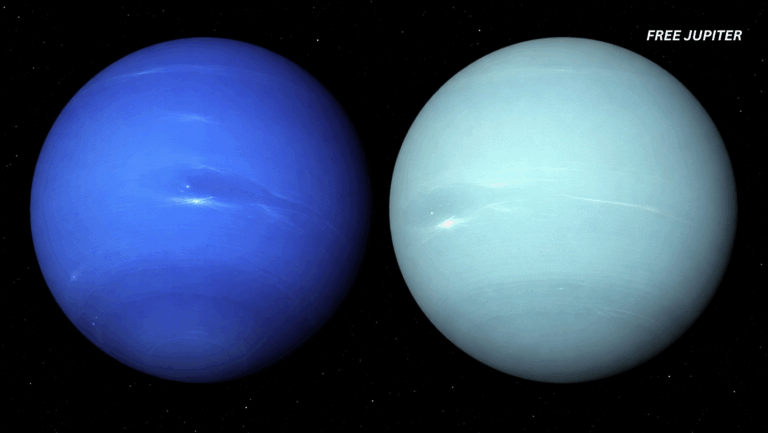Friendly Note: FreeJupiter.com shares general info for curious minds 🌟 Please fact-check all claims—and always check health matters with a professional 💙
Astronomers have uncovered a dramatic new behavior in supermassive black holes. These cosmic giants, known for pulling in everything nearby, are now seen blasting out bursts of wind that look more like speeding bullets than smooth gusts. These fast, powerful outflows travel at nearly a third of light speed, and their explosive nature could reshape our understanding of how galaxies form and evolve.
An Unexpected Twist in Black Holes Wind Behavior
A new wave of research reveals that the winds released by feeding black holes are anything but smooth. Instead, they erupt in fragmented, high-speed bursts. This surprising discovery came from a collaboration between Japan’s space agency JAXA, NASA, and the European Space Agency, with support from Professor Christine Done of Durham University’s Center for Extragalactic Astronomy.
Traditionally, scientists believed that these winds flowed steadily, pushing gas out of the black hole’s reach in a continuous stream. But the latest observations show a chaotic, clumpy structure. These scattered packets of matter behave like mini-explosions that shoot away from the black hole in all directions.
Massive Black Holes With Even Bigger Influence
At the core of almost every galaxy lies a supermassive black hole. Some of these weigh billions of times more than our Sun. While they only take up a small area, their impact is huge. These black holes feast on nearby gas and dust, but not everything gets swallowed. A portion of that material gets heated and flung outward as wind.
This wind can travel far across the galaxy, carrying energy that might stop new stars from forming. Researchers have long seen a strange connection between the size of a galaxy’s central black hole and the size of the galaxy itself. Now, this fragmented wind behavior could help explain why that link exists.

Winds That Punch Instead of Push
Instead of a steady push, the winds seem to act more like punches, striking the galaxy in quick bursts. Scientists observed five different speed levels in a single blast, a sign that the wind is not smooth but comes in separate chunks. These scattered outflows might each move differently, crash into different parts of the galaxy, and release energy unevenly.
This unevenness could cause star-making regions to collapse or, in some cases, continue unharmed. Because some parts of the galaxy are hit while others are not, it becomes difficult to predict exactly how or when a galaxy will stop forming stars.
Read More: A Mysteriously Perfect Sphere Was Spotted in Space by Astronomers
Rethinking Galaxy Evolution Models
Most older theories assumed a black hole’s outflow would be consistent and continuous. These latest findings flip that idea. Researchers now believe that wind might be highly uneven because the surrounding space is full of gas clouds and clumps. These irregular areas may break the wind into scattered pieces, similar to how raindrops split a beam of light.
That scattered flow changes everything. Instead of evenly stripping a galaxy of gas, these bullet-like winds may only hit specific spots. Some scientists believe that even a single burst might carry enough power to shut down star formation in part of a galaxy. Others think smaller bursts might just stir the gas without fully removing it.
Wind Bursts Could Decide Star Formation Fate
These chaotic outflows may determine whether a galaxy keeps creating stars or not. When winds are strong, they can blow away the gas clouds that give birth to stars. But when they are uneven, entire sections of the galaxy might be left untouched.
That might explain why some galaxies suddenly stop forming stars, while others keep going. If the wind is only active during a small part of the black hole’s feeding phase, it may not be enough to shut everything down. This intermittent activity means that a galaxy could face multiple wind events over time, each reshaping its structure.
New Tools Reveal Deeper Layers of Chaos
The XRISM space telescope, a new tool developed by JAXA and other space agencies, has helped uncover the details of these winds. XRISM is capable of measuring fine differences in speed and temperature among the outflowing gas clumps. These changes were previously impossible to detect.
With these observations, astronomers can now study how each gas clump behaves, what it is made of, and how hot it gets as it flies away from the black hole. That information might unlock the full picture of how black holes recycle material and influence their host galaxies.
Galactic Shockwaves and Long-Term Effects
When these gas bullets race outward, they do not just disappear. They crash into the galaxy’s interstellar medium, possibly triggering shockwaves and stirring up clouds. This disturbance can either lead to new stars being born or shut down that process entirely.
Scientists are now looking at whether these winds are unique or part of a bigger pattern. If XRISM finds the same type of clumpy outflow in other black holes, it could mean that our entire view of galaxy evolution needs to be rewritten.
The Bigger Picture Behind Black Hole Winds
These winds might operate like a cosmic sculptor, carving away sections of a galaxy over millions of years. They may not wipe out everything at once, but they could slowly change a galaxy’s shape, star count, and future.
Researchers think that the black hole’s feedback might depend on many factors, like how much gas it is eating, the layout of the galaxy’s center, or how often these blasts happen. Over time, this feedback loop could build or destroy star-forming material in unpredictable ways.
Read More: Mysterious Bacteria With ‘Unique Abilities’ Found on Chinese Space Station
Galaxies Still Have Secrets to Reveal
What remains clear is that supermassive black holes are far more complex than once thought. They do not just consume. They also create ripple effects that stretch across their entire galaxies. These sudden, powerful wind blasts could be the missing piece in understanding why galaxies look and behave the way they do today.
Future observations using XRISM and other space telescopes will continue to track these bullet-like winds. The goal is to find out how common they are and how they shape the evolution of galaxies across the universe. These new insights may finally help us answer some of the biggest questions in astronomy.










